The bad news just never stops, does it, while you’re connected to the global media. The world grows ever smaller: I got texted from the UK for me to watch out for tsunami, before I had heard from NZ media. It was truly chilling to watch the footage from Japan, with that slow moving wave destroy all before it: an evil black slug, devouring all the greenhouses before it, encrusted with new Toyotas and even more bizarrely, houses bursting into flames and then being carried along in the wreckage, still burning. Topped off with threat of multiple nuclear reactors shutting down, and, I guess, a remote chance of them exploding. As far as means of destruction goes, that has to be up there with the worst of times. Biblical in its destruction: all they need now is a plague of giant locusts to really make their day.
I’ve previously written on my attitude to Tsunami before – almost exactly a year ago, after the last great tsunami off the coast of Chile – and I got told off quite firmly by some of the commenters here that I was being irresponsible and frivolous for ignoring the threat. Yes, I went swimming then, and will do so again today – there was no risk to New Zealand. Here it is last time from Chile:

and here it is this time, as forecast from Japan. This time, clearly, the tsunami was real : devastating to Japan.
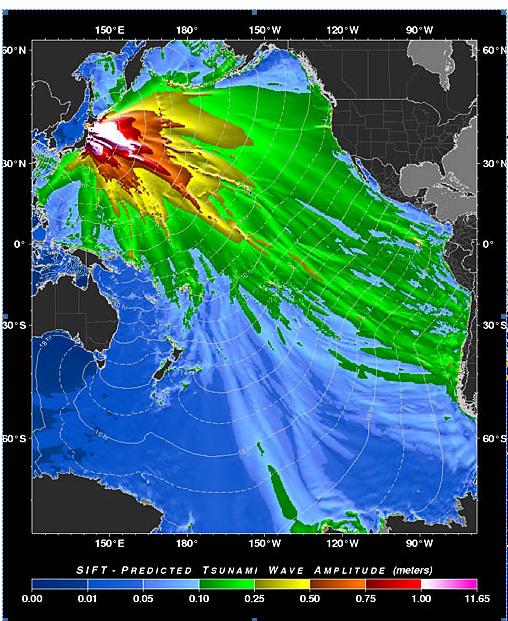
While the “surge” of water here in NZ was a full 50% higher than before, being 15cm in Wellington as opposed to 10cm the last time, I’d still maintain that a common-sense approach is that something on the other side of the world will have lost most of its energy by the time it gets fans out and spreads to the other half of the globe. The bar along the bottom of the graph shows the true story – the purple and white part off the coast of Japan has waves of up to 11-12metres high, but the next grade down, red, has falledn to only a single metre, and by the time the remnants of the wave gets to NZ, its barely rating 10-20cm high. Fast, but piffling: and to be honest, not really an issue in NZ.
However, it’s clearly not just the Earthquakes we have to worry about here. Maybe it is time to look a little more fully at the risks in Wellington. Taken from the Wellington Regional Council’s hazard map we refered you to in a previous post, here is a highly enlarged picture of the threat to Wellington from various hazards, with first up: Tsunami:

That’ll make you not want to live in Lyall Bay, Evans Bay, Seatoun, or anywhere in the refurbished down town.
Being as our landmass here is either hilly or reclaimed from the sea, we’ve also got extreme threats from Liquefaction:
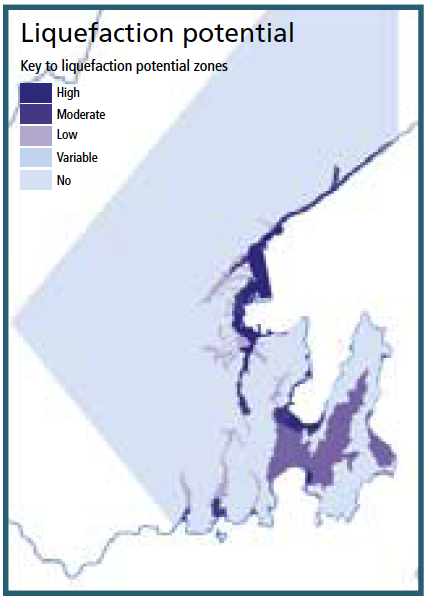
Once again, the foreshore in Wellington, and the reclaimed land at Rongotai all get a hammering.
Most of of course we concern ourselves with Seismic shaking:
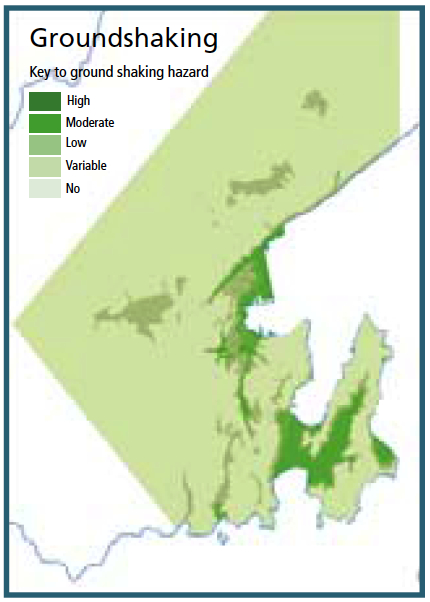
No good news here: we take a hammering all over. Maybe up on the hills is better. Mt Victoria looks nice and safe – perhaps I’ll move to Haitaitai, or Mount Cook.
Which of course can then set off catastrophic landslips on the sides of hillsides:
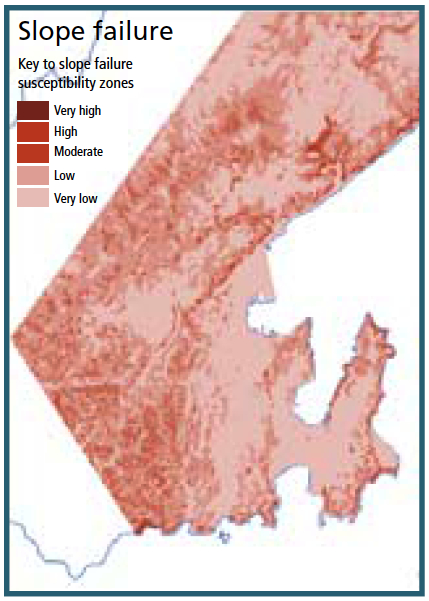
Oh damn, spoke too soon: change that to the very tops of the hills, and avoid the sides. Of course, that means you only have hurricane strength winds to cope with then.
And if we puta ll those risks together, which the nice people at GWRC have done, then combined, they all look like this to the north of the city:
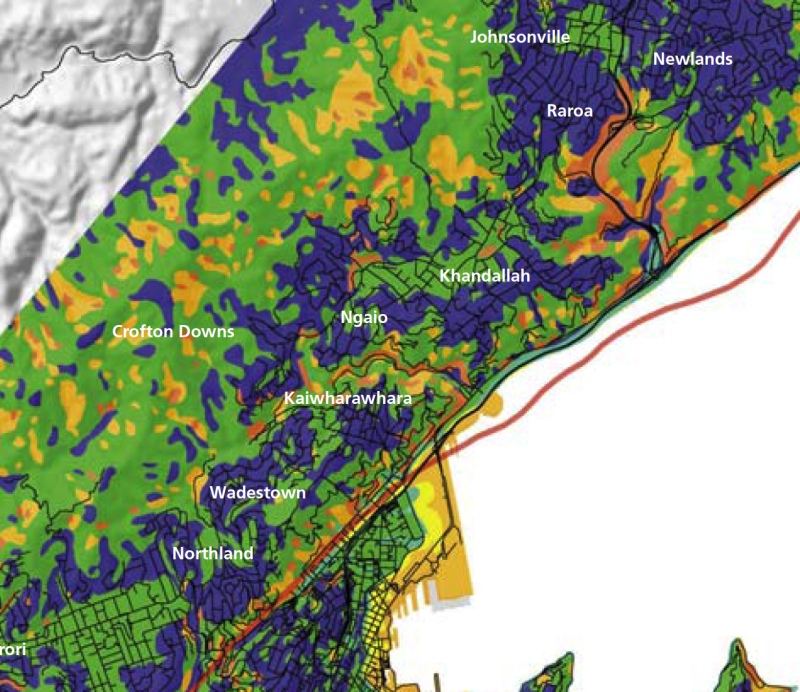
Following on from that, here’s the south of the city. Purple is low risk, green is average, red, as always, means hot and nasty.
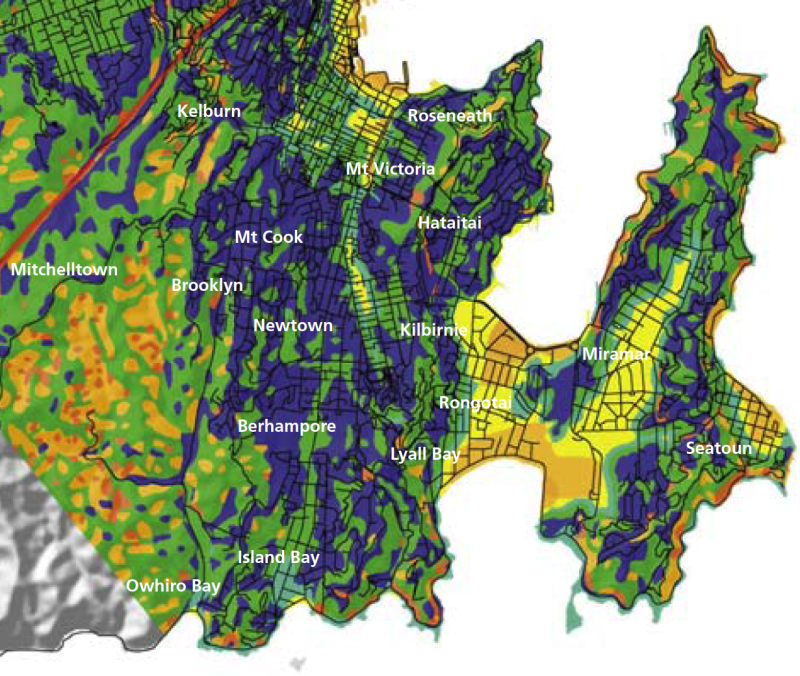
And if you live in the Hutt, here’s a couple of things to really cheer you up:
The Hazard map for Huttites, and a profile of a 440 year flood.
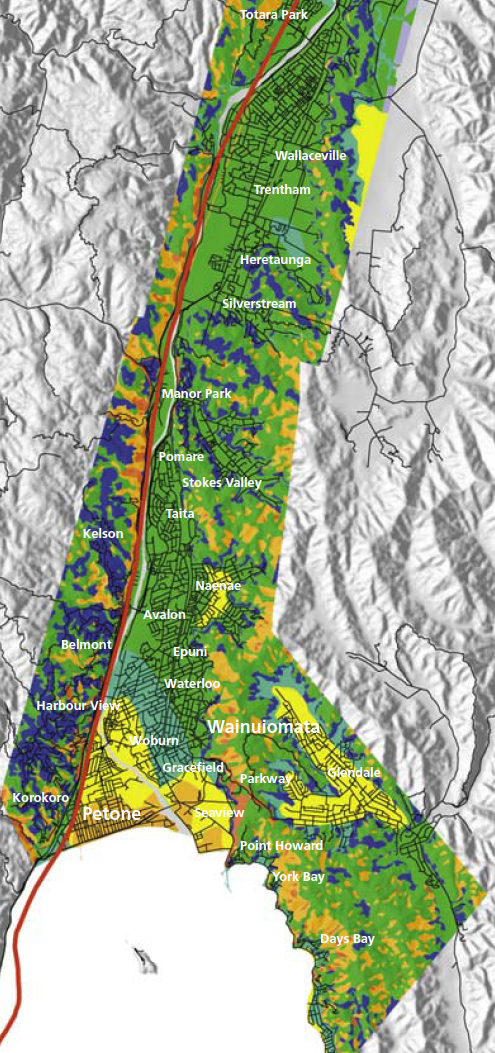 ….
….




I hate people who overdramatise issues and get on the concern wagon, but to be fair, we’re not talking about 10 or 15 cm “waves”. We’re talking about a wall of water that high, which the full force of water behind it. Still 10 to 15 cm is quite small, but the momentum difference between the two are substantially different.
Wellington has a serious dilemma on its hands – we are increasing density in the only place that makes sense topographically, an area that is also the most prone for earthquake liquefaction, tsunamis, AND storm surges from rising sea levels. Really, we should be asking for depopulating areas like te aro in favour of increased density in Kelburn, Haitaitai, Brooklyn, etc.
I was of the impression that it wasn’t rogue waves we should be worried about from the Japanese tsunami here in NZ – rather, it was the disturbance to usual marine currents etc. You could find a rip where there wasn’t on before etc…
While I do still think that Civil Defense are crying Wolf too much, given the “every 15 minutes” warnings of marine advisories yesterday, it was certainly justified in California, where at least one person got washed away off the beachfront. The bays here though were as flat and as tasty as pancakes.
My understanding on liquefaction is that we have a very much different situation than ChCh. They have shingle washed down off the southern Alps for the last many million years, and so it lies in a bed some half a kilometre deep. By contrast, wellingtons cross section is that we have solid rock about 20 meters down. Therefore, good modern piling methods in the Te Aro basin will found on solid rock and thus be relatively safe.
But still, given the deep purple safeness of the maps above, there is a lot to be said for looking again at intensifying inner city housing in places like Mt Vic, Mt Cook, and Newtown. They, and Haitaitai, all seem to be good low risk locations for denser housing. And close enough to town to be able to walk to work. A green bonanza…
I’m not sure you understand tsunami. I love these maps though.
You might like to watch video posted of Californians attitude towards the tsunami coming ashore near a place called McKinleyville.
http://mckinleyvillepress.wordpress.com/2011/03/11/yet-another-mad-river-tsunami-video/
It shows that the force / storm surge of the water (presumably traveling up a river mouth?) is considerable, even when the actual wave height is low – they had less than a metre in height. Also, no wonder that at least 1 and maybe 5 Californians have been washed away by the tsunami hitting their shores.
Jason – really? On the other hand, I’m not too sure that Civil Defense really understand basic physics.
The maps are helpful – but the reality in Japan is terrifying. OK – my view on this: we do really have to worry about tsunami, but especially when it is just a short way offshore from the coast of NZ. From what I can gather, the tsunami in Japan was caused by a massive part of the seabed moving upwards by 2m, and hence pouring huge amounts of water sidewards, as well as the shock wave traveling at hundreds of kms per hour through the water.
I spy a good reason to depopulate Wainuiomata. Shame about Petone.
Good luck trying to intensify Mt Vic, I think the Mt Vic Resistance will put the kaibosh on that. OTOH not all of Te Aro looks so scary. The Willis/South of Dixon area looks fairly safe (provided Cuba St is upgraded). And to the north of the CBD Thordon looks pretty good — if only it had been developed a bit nicer so far.
>but the reality in Japan is terrifying
Sliding bar before/after photos: http://www.nytimes.com/interactive/2011/03/13/world/asia/satellite-photos-japan-before-and-after-tsunami.html?src=ISMR_HP_LO_MST_FB
Interesting to read Gareth Morgan’s comments in the DomPost today – holidaying in the Galapagos, islands were hit by a large destructive wave 20 hours after the quake when most warnings had been lifted.
Just goes to show you can’t safely assume you know what’s going to happen.
Absolutely. My point though, and I’m not going to mention it again because the whole tsunami thing is just so awful, is that we are on the south coast, facing away from the tsunami origin, and with the amplitude of the waves reduced drastically due to the distance – I don’t think we were ever really in any danger. Interestingly, Civil Defence is miffed because the Hawaii CD team cancelled the warning for NZ, about 20 hours before we cancelled ours. I suspect it is because Hawaii had figured out what I am saying – that we were not in danger – and CD here just thought it should be on the safe side, and continue to warn people about a danger even if it didn’t really exist any more.
But enough. I speak no more… I enjoyed my swim, orcas included.
This NIWA computer model of the tsunami which hit Wellington after the 1855 earthquake is worth a look. It would be good to see some similar modeling for Petone and Eastbourne.
http://www.youtube.com/watch?v=J-LpNDoiUMw
maximus- i know this is just a meteorologist, but this explanation discusses the issue of tsunami propagation a bit. http://www.nzherald.co.nz/video/news/video.cfm?c_id=1501138&gal_cid=1501138&gallery_id=117317
as for the warnings not seeming to adhere to basic physics, it could be because, like many phenomena it doesn’t follow newtonian principles. I saw something a few weeks ago that they learned a lot from the boxing day tsunami that they didn’t know about tsunamis, particularly about how they react with cities. The water didn’t do anything like what they thought would happen. Waters a pretty strange thing, never understood that whole principle of introducing turbulence to speed it up…
I think I’m more than just a little bit upset about the destruction in Japan – the coverage of the devastation is so incredibly awful and overpowering – and those before and after photos really just make me want to cry. On a cold, hard, analytical approach, it can be said that the answer is to build in reinforced concrete – it seems that only those buildings have survived, whereas the timber buildings – ie presumably everyone’s houses – have just been totally swept away.
But I can’t be cold and hard or analytical about this – the thought of 10,000 lives being obliterated in an instant, or the thousands of houses, of homes, of memories within those dwellings – the sheer human tragedy of it all, is just overpowering. I’m sort of amazed that people are not simply breaking down in the streets and crying – because, really, we all should be. The devastation is as total and as all encompassing as the 2nd world war, but without being able to blame it on the mind of Hitler – here, it’s just random act of seismicity, and the world is over for a large chunk of population.
And then there is the sheer cruelty of the situation that they can’t afford the time to mourn, or the resources to search in a probably futile attempt to find possible survivors, because the area is now under nuclear melt-down threat. I really feel for those Japanese. I really do.
And in the mean time here, life goes on. It just somehow seems a bit wrong really.
[…] to try and cover this in depth, but seeing yet another tsunami story in the paper reminded me of this excellent post on Eye of the Fish. It should be required reading before anyone jumps to […]